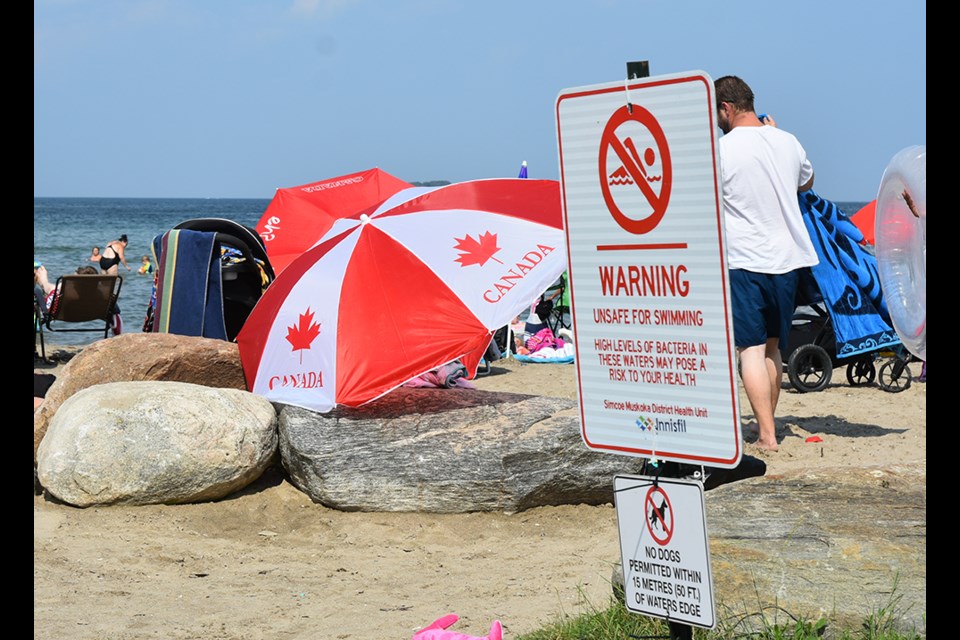Last Thursday, just before the weekend, the Town of Innisfil issued an alert, updating the list of beaches now under a ‘Swim Advisory.’
Based on water testing by the Simcoe Muskoka District Health Unit, not only the 9th Line Beach, and beaches 2, 3, 4 and 5 at Innisfil Beach Park have been posted with warnings, but also ‘Beach 1’, located at the end of Innisfil Beach Road.
The red and white “Swimming Advisory” signs at each beach warn beach-goers that there are elevated levels of the bacteria E.coli in the water at that location, a bacterium associated with fecal matter.
Anyone who chooses to go swimming is at risk of illness, especially anyone who dunks their head or accidentally ingests the water.
“The purpose of the public beach monitoring program is to help prevent and reduce water-borne illness related to high bacteria levels in beach water,” notes Jenee Wallace, Safe Water program co-ordinator with the SMDHU’s Environmental Health Department.
Any number of factors can result in elevated levels of bacteria in the water – including heavy rainfall washing garbage and other materials into the lake, high winds stirring up the bottom sediments, cloudy water, shallow water, a large number of birds gathering in an area, and large numbers of swimmers.
Wallace explains the sampling process, which is carried out for public beaches across Simcoe and Muskoka: “To monitor beach quality, a number of water samples are collected from across the beach and submitted for laboratory testing to determine the amount of E.coli bacteria in the water.”
When the average of the test samples find levels above the ‘Guidelines for Canadian Recreational Water Quality,’ the health unit contacts the local municipality, and issues an advisory.
“We work with the municipality to issue a swimming advisory indicating the beach is unsafe for swimming,” Wallace says.
What’s the risk, for those who choose to ignore the posting? “There is an increased risk for developing skin, eye, ear, nose and throat infections, or gastrointestinal illness,” she notes.
Despite the warning signs posted at the beaches, many people chose to enter the water at Innisfil Beach Park on Sunday, more concerned about the heat than the threat of illness.
Wallace encourages anyone who has developed symptoms after swimming at a posted beach to follow up with their health care provider – and urges beachgoers to regularly check the SMDHU website, to keep track of water quality.
“We encourage people to check this website before visiting a public beach, and not to swim at beaches that are currently posted with a swimming advisory,” she says.
